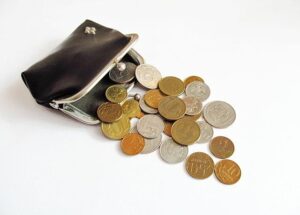Phasing Out the Penny: A New Chapter in U.S. Currency
After more than two centuries of continuous use, the U.S. penny is officially being withdrawn from circulation, signaling a significant shift in American monetary history. This decision stems from escalating production expenses and the coinŌĆÖs steadily eroding purchasing power. Currently, it costs approximately 2.3 cents to mint a single penny, surpassing its face value and prompting policymakers to reconsider its practicality. Experts suggest that retiring the penny will not only reduce government expenditure but also simplify everyday financial exchanges.
Primary reasons behind this transition include:
- Manufacturing costs that exceed the coinŌĆÖs nominal value
- Declining usage in daily commerce, especially with the surge in electronic payments
- Environmental concerns related to metal extraction and processing
- Global precedents where other countries have successfully eliminated low-value coins
| Year | Cost to Produce (cents) | Circulation Volume (billions) |
|---|---|---|
| 2010 | 1.6 | 15.2 |
| 2020 | 2.1 | 11.8 |
| 2024 | 2.3 | 9.5 |
Economic and Ecological Benefits of Discontinuing the Penny
The removal of the penny from circulation carries notable economic advantages. For years, the cost to produce each penny has outweighed its monetary value, resulting in millions of dollars in losses annually for taxpayers. Redirecting funds away from penny production allows the U.S. Mint to focus on more efficient coinage. Additionally, businesses can expect faster cash transactions, as pennies often complicate change-making and slow down checkout lines. Although some consumers worry about price rounding, studies show that rounding to the nearest nickel does not lead to long-term price inflation.
From an environmental standpoint, the pennyŌĆÖs production involves extensive mining and refining of zinc and copper, processes that consume significant energy and contribute to carbon emissions. Eliminating the penny could substantially reduce the environmental toll associated with coin manufacturing. The table below illustrates the estimated annual resource savings if the penny is phased out:
| Resource | Estimated Annual Savings |
|---|---|
| Energy Consumption (megajoules) | 1.5 million |
| Carbon Emissions (metric tons) | 3,200 |
| Raw Materials (tons of copper and zinc) | 500 |
- Decreased mining operations, reducing environmental degradation and pollution
- Lower greenhouse gas emissions linked to production and distribution
- Promotion of cashless payment methods, further diminishing reliance on physical coins
Adjusting to a Pennyless Economy: How Consumers and Businesses Will Evolve
As the penny phases out, both consumers and retailers will need to adapt their financial behaviors. Retailers are expected to increasingly embrace digital payment platforms and implement rounding policies for cash transactions, aligning prices with nickel increments. Consumers will gradually adjust to these changes, including new methods for calculating change and budgeting without the smallest denomination. Additionally, traditional penny-based fundraising initiatives will need to explore alternative approaches to maintain their effectiveness.
To facilitate a smooth transition, many merchants will apply rounding rules that favor cash payments while maintaining clear communication to preserve customer confidence. Key adaptations consumers can anticipate include:
- Rounding cash totals to the nearest five cents
- Increased adoption of contactless and mobile payment options that automatically calculate exact amounts
- Modifications in charitable giving methods traditionally reliant on pennies
These shifts, though subtle, represent a meaningful transformation in everyday financial interactions, reflecting the ongoing modernization of the economy.
| Change | Effect | Illustration |
|---|---|---|
| Rounding Cash Transactions | Streamlines handling of change | $1.02 rounded to $1.00 or $1.05 |
| Growth in Digital Payments | Boosts contactless purchasing | Mobile wallets and credit/debit cards |
| Fundraising Innovations | Shift toward electronic donations | Online crowdfunding platforms |
Strategies for a Seamless Transition to Penny-Free Cash Payments
As the nation moves toward retiring the penny, it is crucial for both businesses and consumers to adopt effective strategies that facilitate a smooth transition. One essential approach is the implementation of standardized rounding policies at points of sale, where purchase totals are rounded to the nearest five cents, eliminating the need for pennies. Clear communication about these policies will help build consumer trust and reduce confusion during the adjustment period.
Retailers should also invest in upgrading their cash registers and payment systems to support the new rounding procedures seamlessly. Providing comprehensive training for staff will prepare them to handle customer inquiries confidently. Furthermore, public education campaigns can raise awareness about the reasons behind the pennyŌĆÖs discontinuation and guide consumers on navigating cash transactions in this updated monetary environment.
- Implement uniform rounding rules: round cash totals to the nearest nickel
- Modernize POS systems: ensure compatibility with rounding mechanisms
- Equip employees with knowledge: train staff to address customer questions effectively
- Engage in public outreach: educate consumers on the benefits and procedures of the change
| Product | Original Price | Rounded Price |
|---|---|---|
| Espresso | $3.97 | $4.00 |
| Book | $5.12 | $5.10 |
| Snack Bar | $1.03 | $1.05 |
Looking Ahead: The Future Without the Penny
As the penny prepares to exit the monetary stage after over 200 years, this milestone closes a significant chapter in U.S. currency history. While many hold sentimental value for the smallest coin, practical economic and environmental considerations have driven its retirement. The coming months and years will reveal how this change influences everyday transactions and the broader financial landscape, as America embraces a future where the penny is no longer part of the currency mix.








